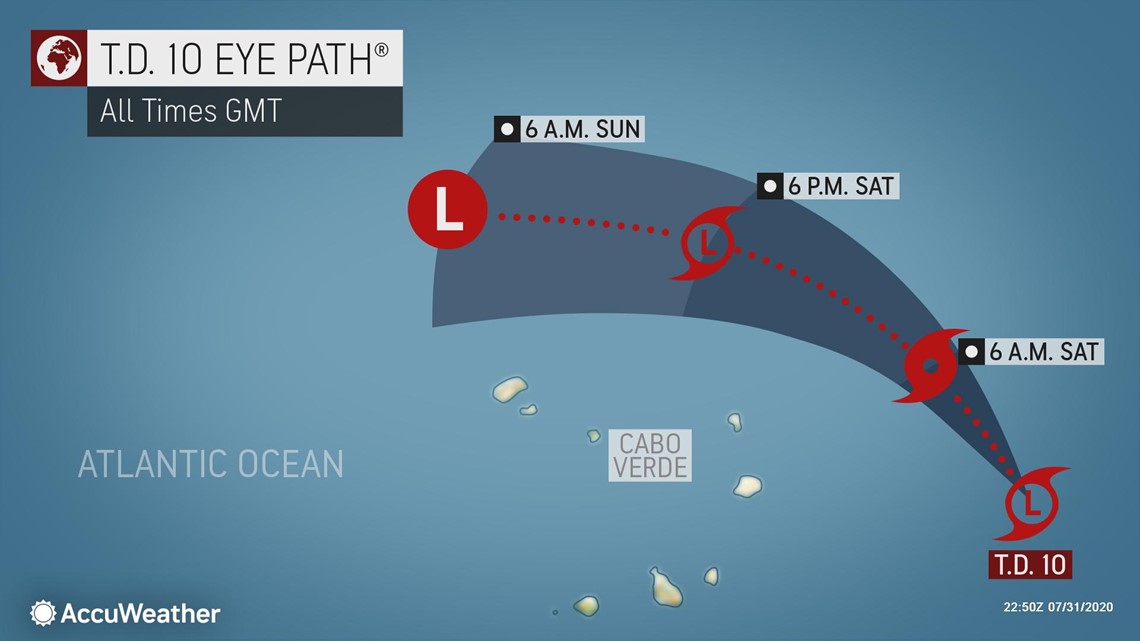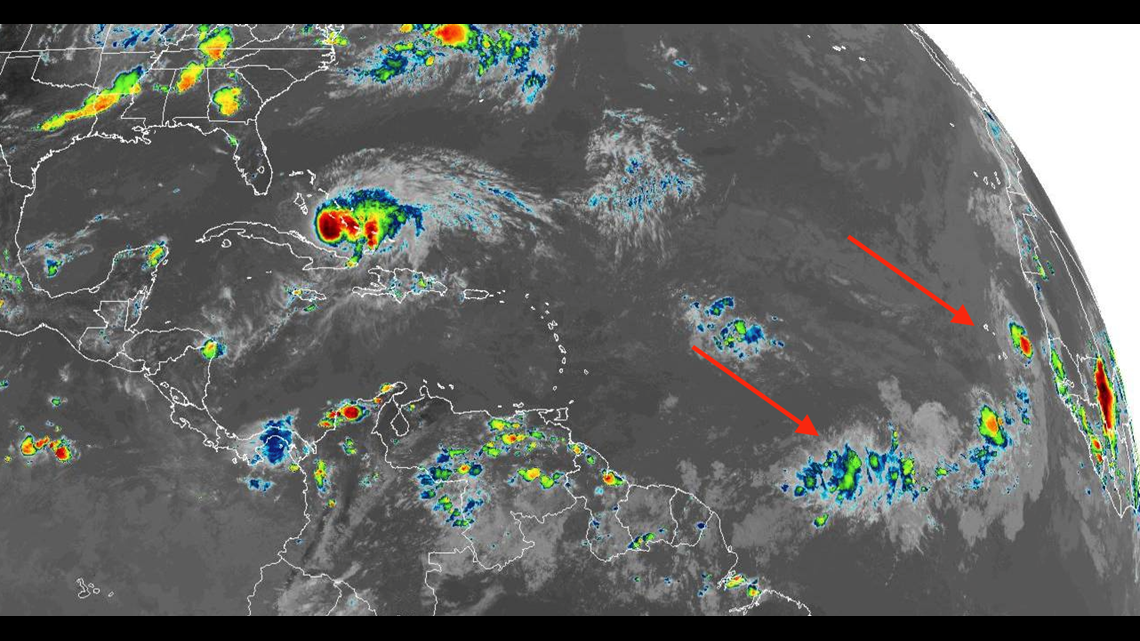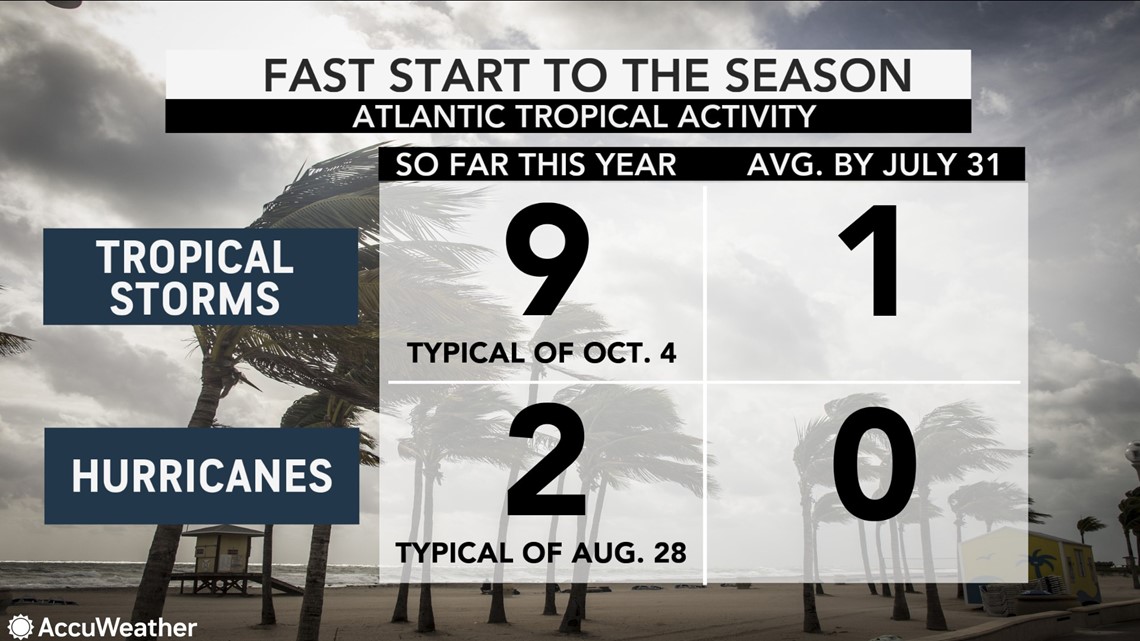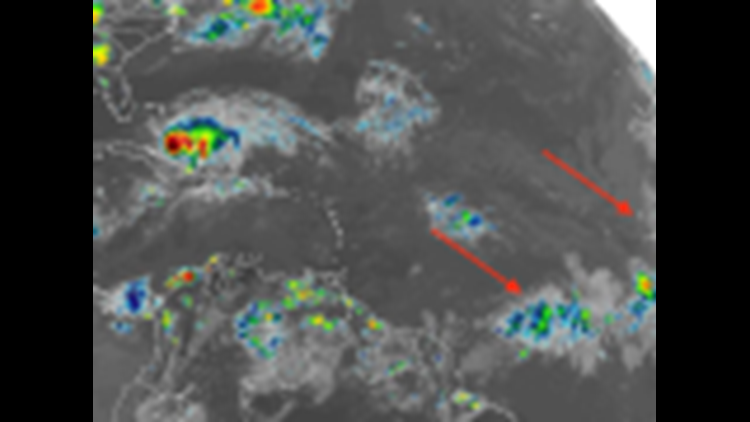Hurricane Isaias is currently garnering the most attention from forecasters as the storm navigates through the southwest Atlantic on its way toward the United States, where is it is expected to impact the East Coast into the middle of next week.
However, Isaias has some company on the other side of the Atlantic Ocean with the development of a new tropical system.
On Friday afternoon at 5 p.m. EDT, Tropical Depression Ten took shape about 200 miles off the west coast of Africa. However, the newly-formed system only has a small window to strengthen into a named tropical storm.


"Conditions [are] expected to become less favorable by Saturday as this feature moves northward," AccuWeather Senior Meteorologist Rob Miller said.
If the tropical depression does strengthen into a tropical storm before encountering these disruptive conditions, it would take on the name Josephine.


AccuWeather's team of tropical forecasters is monitoring another area located about 700 miles east of the Lesser Antilles. The system is moving to the west and producing limited shower activity.
Miller said this feature is expected to move slowly through the southwestern Atlantic and may eventually bring some impacts to Bermuda late next week. Similar to the feature near the Cabo Verde islands, there is a low chance for additional development over the next 48 hours.


The National Hurricane Center gives the tropical wave closer to the Lesser Antilles a 30 % chance of developing over the next five days.
Since the Cabo Verde season is now well underway, there will be a risk of other disturbances that could take on tropical characteristics in the next couple of weeks. The Cabo Verde season is a period of time when tropical waves, which move off the Africa coast, are most active. The Cabo Verde islands, for which the season is named, lie just off the west coast of Africa.
While the period from late August through the middle of September marks the most dramatic increase in tropical activity on an annual basis, the 2020 season has already demonstrated that this will be a well-above-average season.
AccuWeather lead tropical forecaster Dan Kottlowski and his colleagues say there is a chance that this year could become "hyperactive" in terms of the storms that develop. Up to 24 named tropical systems are possible, according to the tropical team's latest long-range outlook. This would be close to the record-setting 2005 season in which 28 storms developed.


Nine named storms have already formed, including two hurricanes, which is well ahead of the traditional pace. Six out of nine of the tropical storms to date have been record-setters in terms of early formation for their respective letters. In some years, there aren't enough named systems to make it this deep into the rotating list of Atlantic tropical names.
Kottlowski pointed out that four named storms have already made landfall in the U.S. before the end of July, and a fifth, Arthur, brought some impacts to North Carolina in May.
"That's very remarkable through July," Kottlowski said. "It's very unusual for us to see that many impacts, landfalls especially, so early in the season."
It's not just meteorologists who need to keep a close eye on how storms develop and where they're heading. AccuWeather users can now do that from home using our local hurricane tracker pages that provide detailed information about a specific location.
Click on the city name to track how Isaias will impact each place as it churns northward: Miami, Florida; Daytona Beach Florida; Jacksonville, Florida; Myrtle Beach, South Carolina; Hilton Head, South Carolina; Virginia Beach, Virginia; Ocean City, New Jersey; New York City; Boston, Massachusetts.



